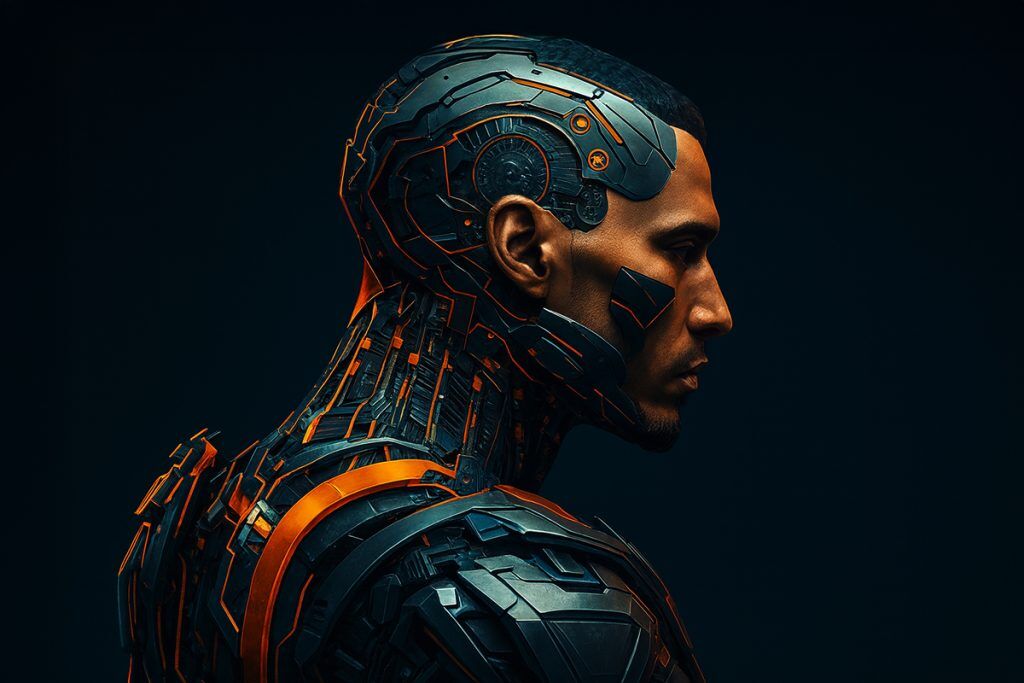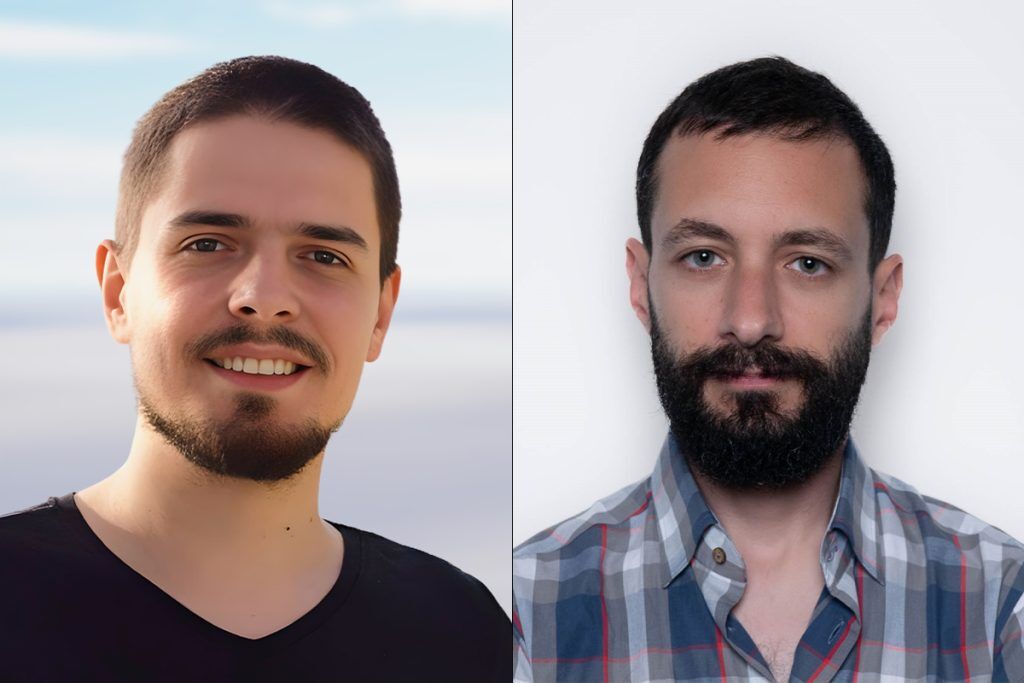
Swiss startup is betting that ‘synthetic replacements’ will offer a faster route to radically extending human lifespan.
For most, the term “cyborg” probably evokes scenes from science fiction movies, rather than an current area of technology research and development, but Swiss startup Sciborg is aiming to change that perception. The company is on a mission to redefine the boundaries of human existence through the development of synthetic replacements for everything from blood and organs to your entire head.
While its long term vision is undoubtedly controversial, Sciborg claims it has developed a step-by-step approach to achieving its goal, bringing together both nascent and established innovations, spanning medical devices, organ preservation, robotics and brain–machine interfaces, into a unified system. The company’s current focus is on extending organ viability “well beyond” today’s limits – starting with the liver. But its founders know they cannot drive every technological advancement needed on their own.
Longer term, Sciborg aims to leverage the collective power of entrepreneurs, scientists and domain experts around the world to integrate multiple solutions to help realize its “cyborgization” vision. To this end, the company has launched as a decentralized autonomous organization (DAO), allowing contributors and crypto token holders to have a direct influence over its organizational decisions and strategic direction.
Longevity.Technology: Cyborgization refers to the process of integrating artificial components into the human body to restore, enhance or even surpass normal biological functions. The field is already manifesting through the emergence of medical technologies like pacemakers, cochlear implants, artificial limbs, organ replacements and brain-computer interfaces. Sciborg wants to take things further, leveraging cybernetic technologies to replace failing biological systems and deliver unprecedented gains in healthspan and longevity. We sat down with co-founders Andrei Panferov and Tomer Landsberger to find out how the company plans to achieve its vision.
Landsberger, a former researcher in aging biology at the Weizmann Institute of Science, explains his interest in cyborgization emerged from a perceived lack of progress in biological approaches to longevity.

“I became dissatisfied with the current strategies focused on drug interventions to reverse aging – those approaches are turning out to be extremely difficult,” he says. “The most effective intervention we’ve known for decades is calorie restriction. It works in animal models and probably helps humans slightly, but beyond that, there are no approved drugs that truly target aging. Drug discovery cycles are long, and biology is very complex. After spending years studying this, I became pessimistic that the biological approach alone would get us where I want to be in my lifetime.”
Electronics evolve faster than biology
As Landsberger thought more about the alternatives, he began exploring the idea of cyborgization: moving beyond the biological “flesh suit” as he calls it.
“I started thinking about what it would take to keep just the head alive, separate from the body, using machines,” he says, pointing out that the Russian scientist Sergei Briukhonenko was apparently already able to keep a dog’s head alive for more than three hours a century ago.
“We already have devices that keep organs alive ex vivo for short periods,” he adds. “So I wondered, theoretically, what would it take to keep a head alive and healthy indefinitely? What technologies would we need?”
These questions led him to write a Substack post outlining the key innovations needed to achieve this lofty goal. The post drew the attention of Panferov, a serial tech entrepreneur, who had been seeking to start a business focused on human life extension.
“I had been interviewing dozens of wealthy individuals about what kind of life extension strategies they believed in and wanted,” says Panferov. “Some mentioned biogerontology, gene therapy, or cryonics. But surprisingly, one strategy kept coming up as the preferred choice: cyborgization – essentially migrating the mind into a synthetic body.”
“Most of them made their money in tech, so they trust electronics and engineering. They believe electronics evolve much faster than biology and are easier to upgrade. In their view, gerontology won’t solve aging fast enough.”
A pathway to life extension
Together, the Sciborg co-founders sought to establish what work was being conducted and where.
“We started mapping the field: which organs can we already make artificially? What neural interfaces exist? Who are the scientists doing this work?” says Panferov. “We talked with hepatology surgeons, transplantation experts, bioengineers, and neurophysiologists worldwide. We mapped the entire state of the art: which organs can be kept alive outside the body, for how long, and by whom.”
“We found research groups who have kept livers alive for 17 days, compared to one day in commercial systems,” adds Landsberger. “We know there are at least two companies working on keeping brains alive – not for our purposes, but it shows progress. And we know at least one person experimenting with keeping a head alive.”
However, despite all of the work going on in different areas, Landsberger and Panferov felt no one yet viewed cyborgization as a legitimate pathway to lifespan extension.
“There are companies making neural interfaces, but not with lifespan extension in mind,” says Panferov .”There are artificial organs, but not intended for fully replacing biological ones permanently.”
The co-founders then decided to focus on what technologies need to be developed in parallel with all these other initiatives to enable cyborgization in the future.
“Of course we can’t build the final ‘keep a head alive indefinitely’ system immediately,” says Panferov. “But like Elon Musk building rockets before Mars missions, we can iterate step by step. Essentially, we want to build the ‘rockets’ for organ survival before we move on to full-body or head survival.”
Initial focus on organ survival
The first practical step for Sciborg is to extend ex vivo organ viability well beyond today’s limits.
“Our first milestone is useful organ preservation – solutions that hospitals and transplant centers can actually use,” says Landsberger. “That gives us both revenue and experience.”
“That means creating better perfusion machines and integrating advanced monitoring – real-time blood chemistry, pressure, temperature, oxygenation, metabolic waste, and more,” adds Panferov. “We also need improved anti-coagulation strategies, sterility controls, and mechanical stimulation systems.”
The second step is to design systems that can handle not just one organ, but multiple organs.
“This requires not just mechanical engineering but also software and sensing innovations, because keeping an organ alive is as much about knowing what’s going on inside it as about pumping blood through it,” says Panferov.
Landsberger stresses that Sciborg isn’t trying to solve all the challenges of cyborgization by itself. It wants to try and bring all the technologies together.
“For example, there are companies already in clinical trials for oxygen carriers and artificial blood components,” he explains. “We don’t have to invent everything from scratch. We want to be prepared when key breakthroughs like fully functional synthetic blood or better neural interfaces arrive. Then we can integrate them quickly into our systems and push toward the bigger vision: long-term survival of the brain.”
Liver preservation is key
First on Sciborg’s organ preservation list is the liver – an organ critical to future brain survival due to its primary functions of regulating metabolism and detoxification.
“Right now, commercially available technology can keep a liver alive for one day,” says Penferov. “There are already research teams out there trying to extend that to three days. Our initial goal is to develop a perfusion machine capable of extending that by several more days – and to bring such a machine to market. This has immediate clinical applications that hospitals need today.”
To help it achieve its initial goal, the company has teamed up with University of Geneva professor Michele Diana.
“With Michele’s expertise, we decided to focus on building a better organ preservation machine and iterate directly in Switzerland, using marginal donor livers not viable for transplant,” says Panferov. “This will allow us to test and improve our device. Even just incorporating our planned innovations – real-time blood monitoring, organ viability assessment, and automatic responses to physiological changes – would be an impressive achievement. And this alone would be enough to fund a significant portion of our larger mission.”
This first step is reflective of how Sciborg intends to progress on its cyborgization journey – with each component expected to become its own viable market product.
“Every element in our pipeline has been designed to be commercially viable on its own,” says Panferov. “That’s really exciting because we don’t have to rely solely on a distant, big-picture vision – we’re creating tangible, independent products along the way.”
“The project as a whole is simply too big for a single company to achieve – it’s immense,” concurs Landsberger. “There are many companies working on technologies that could push our mission forward, so we started thinking about a model where we act like a venture builder or VC. The idea is to spin out companies from our initial research to develop specific components independently.”
Funding via a DAO model
The mindboggling scale of the project is also why the company decided to explore a DAO model, where funding is generated through cryptocurrency.
“We were inspired by friends who successfully launched similar efforts, such as HydraDAO and CryoDAO,” says Landsberger. “So we intend to launch our own governance token and build a community of mission-aligned supporters. We’ll use those resources to fund key projects we’ve identified as crucial to achieving our vision.”
In the short term, Sciborg’s founders are self-funding the development of the initial perfusion technology, alongside angel investors and grant funding.
“Later, we’ll likely involve VCs, especially as we move beyond blood circulation into areas like advanced materials and neural interfaces, which are essential for our long-term goals,” says Panferov. “And we’re planning to leverage the DAO model for those future areas like neurotech, material science, blood-to-synthetic interfaces, and tissue-to-synthetic interfaces.”
So how quickly does the company realistically expect to deliver on its goals. Well, it depends who you ask.
“We need about two years of engineering work and iterative testing on donor livers, after which we could start clinical trials for the blood circulation device,” says Panferov. “After that, if a few key breakthroughs happen, I’d say we could have a survival-ready strategy within 10 years.”
Landsberger is less optimistic. “I think we’re looking at maybe 20–30 years before we can keep a head alive and healthy for an extended period. But who knows? It also depends on us!”


